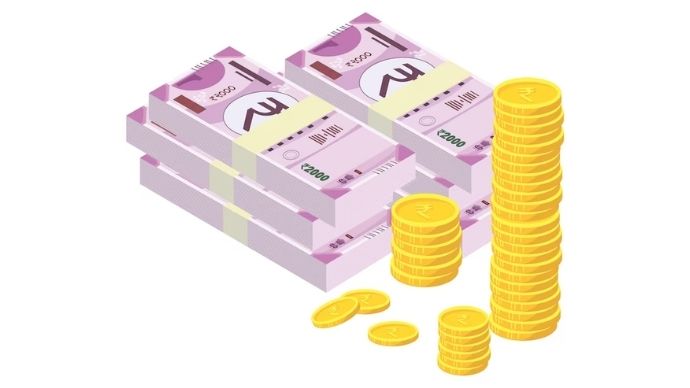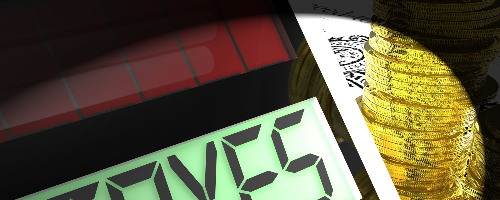
Credit cards are commonly associated with making payments for everyday expenses like groceries and bills. However, many are unaware of the option to use a credit card to access funds from their bank account. This article aims to elucidate this process of cash withdrawal via credit cards, shedding light on withdrawal limits, interest implications, and associated fees.
Understanding How to Withdraw Cash from Credit Card
A credit card cash withdrawal, also known as a cash advance, facilitates the immediate receipt of money from your credit card at an ATM. This sum must be repaid in full, accompanied by interest charges. Essentially, it’s an unsecured loan that provides quick access to funds when needed, albeit at a cost – typically a fee of around three percent, which is usually more cost-effective than other loan alternatives.
The Mechanism of Cash Withdrawal from a Regular Credit Card
While it may be enticing to use your credit card for cash during financial emergencies, it can eventually exacerbate your financial burden. Unlike regular credit card purchases, which come with an interest-free period ranging from 15 to 45 days, cash withdrawal operates on a separate cycle. Interest begins accruing from the day of the withdrawal, and there’s no grace period.
Pros and Cons of Credit Card Cash Withdrawal:
Advantages:
- Flexibility in using the cash for various purposes, such as bill payments or grocery shopping.
- Immediate access to funds with minimal hassle.
- No restrictions on the usage of the withdrawn cash.
- No need for bank approval or extensive paperwork, making it a convenient source of money.
Disadvantages:
- Incurs a cash advance fee, imposed by the issuing bank.
- Failure to repay the full amount within the specified period leads to increased interest rates.
- Missing repayments can result in a reduction of your credit limit.
- Cash withdrawals do not earn rewards points, and interest accrues from the date of the transaction until fully repaid.
How to Withdraw Cash from Credit Card ?
Obtaining cash from a credit card is as straightforward as using a debit card at an ATM. However, consider the following points:
- You can withdraw cash from any ATM, irrespective of your credit card issuer.
- You must generate a credit card PIN before initiating a cash withdrawal at a nearby ATM.
- Some banks may impose an additional fee for using a third-party ATM.
- Credit card companies may limit the amount you can withdraw in a single day. Exceeding this limit may result in additional fees and finance charges.
No Grace Period for Cash Withdrawal-
Unlike regular purchases, cash withdrawals do not benefit from an interest-free period and immediately start incurring interest. Additionally, there’s a transaction fee and a finance charge, which can be as high as 2.5% to 3% of the withdrawn amount or a minimum amount set by the bank, with customers paying the higher of the two. The interest rate for cash withdrawal is also notably higher compared to regular credit card purchases.
Can You Withdraw Money from an ATM Using a Credit Card?
Yes, you can withdraw money from an ATM using your credit card. Banks impose charges for such transactions, with lower fees when using their own ATMs and higher fees at other banks’ ATMs.
Credit Card Cash Advance Limit vs. Credit Limit:
While the credit limit specifies the maximum amount you can spend on your credit card, the cash limit dictates the maximum cash amount you can withdraw using the card. The cash limit is typically a percentage of the credit limit, often ranging from 20% to 40%. This percentage may vary based on your spending behavior, repayment history, and credit information from bureaus. MoneyTap offers a unique feature, allowing a 100% cash limit on its credit card.
Interest on Cash Withdrawal from a Credit Card:
In contrast to retail purchases with a grace period of 20 to 50 days, cash withdrawals start accruing interest from day one. The interest rate typically ranges from 2.5% to 3.5% per month. Additionally, a transaction fee of about 2% to 3% is applied to the withdrawn amount. Taxes are also levied on the interest, making credit card cash withdrawals relatively expensive.
Charges Associated with Credit Card Cash Withdrawal:
The following charges are typically linked to credit card cash withdrawals:
- Interest: Interest rates range from 2.5% to 3.5% per month.
- Cash Advance Fee: A fee, typically 2.5% to 3% of the transaction amount, is charged.
- Finance Charges: These apply from day one until the amount is fully paid.
- Late Payment Fee: Failing to pay the full amount on time results in late payment charges, typically ranging from 15% to 30%.
- Click here to check different bank charges levived on credit card cash withdrawal.
FAQ’s :
- Can I avoid paying a cash advance fee?
The best way to avoid a cash advance fee is to minimize or avoid taking cash advances altogether. If you must take one, paying it off as soon as possible can reduce the fees. - What is the credit card cash withdrawal limit?
The cash withdrawal limit is usually a percentage of your credit limit, which varies from one credit card to another. - Will my credit score be affected by a cash advance at an ATM?
No, your credit score will not be affected by a cash advance. However, factors like high credit utilization and late repayments can influence your credit score. - Is the facility of cash withdrawal available on all credit cards?
Not all credit cards offer cash withdrawal capabilities, so it’s essential to check with your bank or credit card issuer regarding this feature.



Really very resourceful knowledge given by Mr. Aditya…its in a very clean and simple language.Kudos to your efforts and thanks for sharing this.